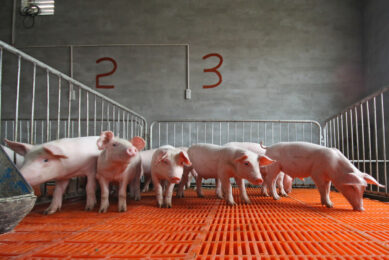Pig Focus Asia in Bangkok again a success
Bangkok served as a great place to organise the 3rd Pig and Poultry Focus Asia and the 1st Dairy Focus Asia. These technical conferences, which were held prior to the international feed show Victam Asia, 6-8 March attracted around 600 delegates from over 30 countries.
At the plenary opening ceremony Sakchai Sriboonsue, the Thai Livestock Department’s Director General and Paul Reid from the British Embassy welcomed delegates to the conferences and Vanus Taepaisitphongse, the CEO of the internationally known Betagro Group, reflected on the challenges facing progressive livestock producers and the importance of the effective utilisation of knowledge in today’s successful livestock operations.
Mycotoxins
The Pig Focus conference was marked by presentations on feed additives, mycotoxins, health and more efficient feeding. Gerard Morantes from Cargill Animal Nutrition in the US gave a presentation about predicting and managing the mycotoxin risk. He explained that the world grain production is increasing (estimated to reach 2076 million tonnes in the 2007/08 harvest).
This means that we have to be extra focused on preventing that these large amounts of grains become contaminated with mycotoxins. Morantes said that around 5 years ago, testing for mycotoxins was still not a standard procedure. However, mycotoxins analyses are starting to become a standard procedure nowadays, Morantes said.
Nutricines
Christopher Nelson from Kemin Industries in the US spoke about nutricines and the future of nutrition. Nutricines are the functional components that have a beneficial effect on the animal but do not have an energetic value. Examples are vitamins, minerals, pro and prebiotics. Nutricines act at several different sites and levels in the body and may help the digestion and absorption of nutrients. They protect against pathogenic micro-organisms through supporting the immune system and against non-infectious diseases by control of oxidative stress.
Nelson explained that nutritionists have to focus more on the “total nutrition” concept. This means that we not only have to feed the animal for maximum growth, but that we also have to feed the animal for optimum health and welfare.
Phytase
Gary Partridge from Danisco Animal Nutrition in the UK updated the audience on profitable use of new enzymes. He explained that the enzyme phytase is a crucial ingredient in animal feed as it converts the phytate (an anti-nutritional factor) into phosphorus. Phosphorus (P) is an essential nutrient for all animals. Deficiency of P is the most widespread of all the mineral eficiencies affecting livestock.
The first generation phytase enzymes were produced using genes from Aspergillus niger and Peniophora lycii. However, at Danisco they have made a new generation phytase by using the genes from the E. coli bacteria. The advantage of this new production method is that the phytase is less sensitive to the stomach acid pepsin, meaning that the enzyme is more efficient in the animal.
Small piglets
Robert van Barneveld from Barneveld Nutrition in Australia addressed the importance of enhancing the nutrition of pre and post weaning pigs. He explained that light pigs can respond very well after nutritional strategies and don’t necessarily have to be taken out the group. According to Van Barneveld, the use of colostrum protein isolates are a great way to give the small piglets a good start. These products are high in the antibody IgF and trials showed significant differences in gut health among the piglets. He also mentioned that the use of semi-moist extruded creep feed also showed positive results in pigs. This type of feed consists of soft and chewy pellets, which are easily taken up by the piglets.











